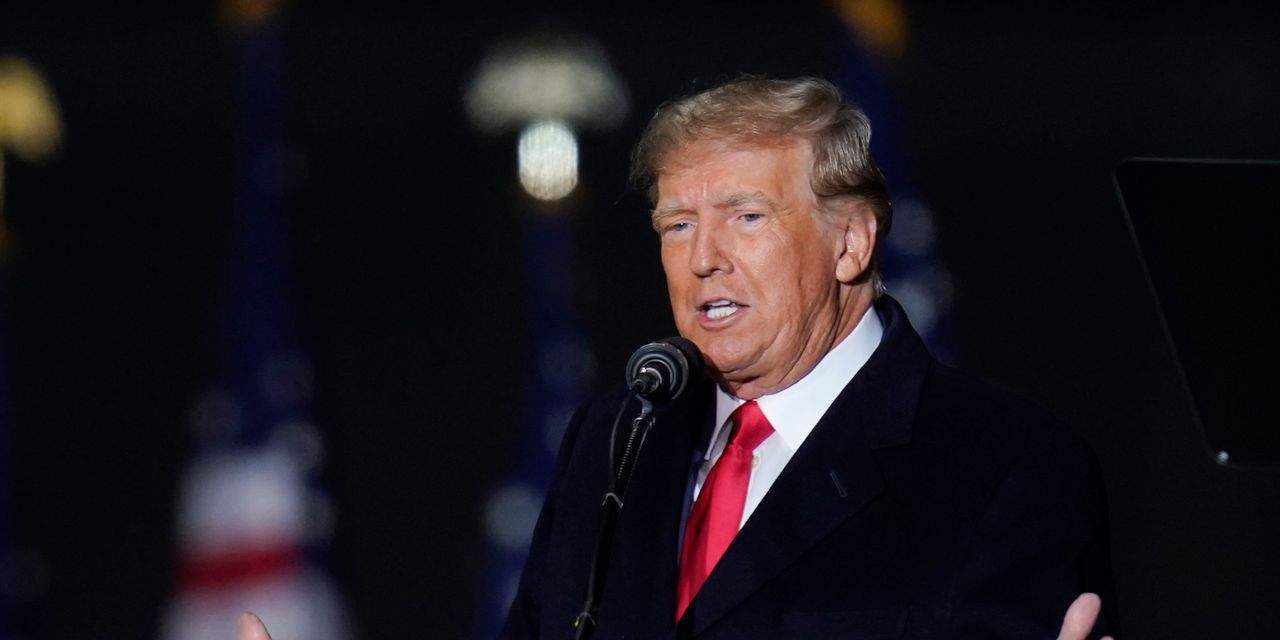A total of 25 Senate candidates and 162 House candidates endorsed by former President Donald Trump were on the ballot in the Nov. 8 midterm elections.
Eight other congressional candidates had also been endorsed by Trump but either lost their primary, dropped out of the race or did not appear on ballots for other reasons.
Among Trump’s Senate endorsees, the Associated Press has declared 17 winners.
There were also losers: Don Bolduc in New Hampshire, Gerald Malloy in Vermont and Leora Levy in Connecticut, all endorsed by Trump, lost their elections. Neither Malloy nor Levy was favored to win, but Bolduc’s race was more competitive, with a Cook Political Report (CPR) rating of lean Democratic.
The biggest blow was Republican Mehmet Oz’s 3.4-point loss to Democrat John Fetterman in Pennsylvania, which flipped that Senate seat blue. Trump endorsed Oz in April ahead of a crowded Republican primary, saying the decision was “all about winning elections.”
Three tossup Senate races have not yet been called by the AP. In each of those races, the Republican candidates were endorsed by Trump: Blake Masters in Arizona, Herschel Walker in Georgia and Adam Laxalt in Nevada. Laxalt currently leads by 3 points, with 75% of the vote reported, and Masters trails by 5 points, with 68% reported.
Walker’s race against incumbent Democrat Raphael Warnock is much closer, and with neither candidate cracking 50%, it will advance to a runoff on Dec. 6.
One other Senate race has also not yet been called: In Alaska, both of the top candidates are Republicans, with Trump-backed Kelly Tshibaka running against incumbent Republican Lisa Murkowski. With 74% of the vote reported, Tshibaka is at 44% to Murkowski’s 43%. If neither candidate reaches 50%, the state’s new ranked-choice system will kick in — the same system that fueled Democratic Rep. Mary Peltola’s special-election win in August.
Trump had largely focused his attention on the Senate in hopes of breaking Democrats’ narrow control of the 50-50 chamber. MAGA Inc., a super PAC tied to the former president, spent more than $16 million, primarily to boost Masters, Walker, Oz, Laxalt and Ohio’s J.D. Vance.
On the House side, Trump-endorsed candidates broadly performed well: 141 of the 162 endorsed candidates had been deemed election winners by AP as of Wednesday afternoon.
Nine candidates backed by Trump have lost their elections; seven of those were running in competitive districts as determined by CPR’s ratings. Among the races featuring Trump-backed candidates that have not yet been called by AP, those candidates lead in six and trail in seven.
When it comes to general-election candidates endorsed by Trump, the former president’s win rate is relatively high: at least 68% on the Senate side, with four races yet to be decided, and at least 87% on the House side, with 12 outstanding races.
Trump’s Senate win rate could go as high as 88% if all his remaining candidates win; if only the candidates who are currently leading win, his rate would be 76%. His House rate would tick up to 90% if the five candidates he endorsed who are currently leading win.
But the track record of how pivotal his endorsement was in closer contests is much worse.
This cycle, Trump did not widely endorse candidates in highly competitive races. Of the 187 congressional candidates he endorsed in the general election, only eight Senate and 16 House districts were rated as lean or tossup by CPR.
Among those 16 House endorsees, only two have so far won election, according to AP race calls: Republicans Anna Paulina Luna in Florida and incumbent Ashley Hinson in Iowa, both of whose races leaned Republican. Eight others lost their elections, six of which were in tossup races and the other two of which leaned Democratic.
Of the remaining six Trump-backed congressional candidates whose races have not yet been called by the AP, only two — Zach Nunn in Iowa and Ryan Zinke in Montana — are currently in the lead. Both seats were rated as lean Republican by CPR.
The other five House candidates endorsed by Trump trail by an average of 10 points, with the furthest behind being Alaska Republican Sarah Palin, who is trailing Peltola by 20 points. That race is likely headed to a ranked-choice second-round tabulation. The closest race is that of five-term Rep. David Schweikert in Arizona, who trails Democrat Jevin Hodge by 2 points.
That means Trump’s general-election endorsement rate in competitive House races this cycle would be, at best, 50%. If all the candidates who are currently leading in their races were to win, that rate would drop to 25%.
On the Senate side, three of the eight candidates Trump endorsed in competitive races have been declared winners by AP: Ron Johnson in Wisconsin, J.D. Vance in Ohio and Ted Budd in North Carolina. Given Mehmet Oz’s loss in Pennsylvania and the three outstanding Senate races, the former president’s endorsement-to-win rate could at best be 87.5%, but if only the currently leading candidates win, it would be 50%.
